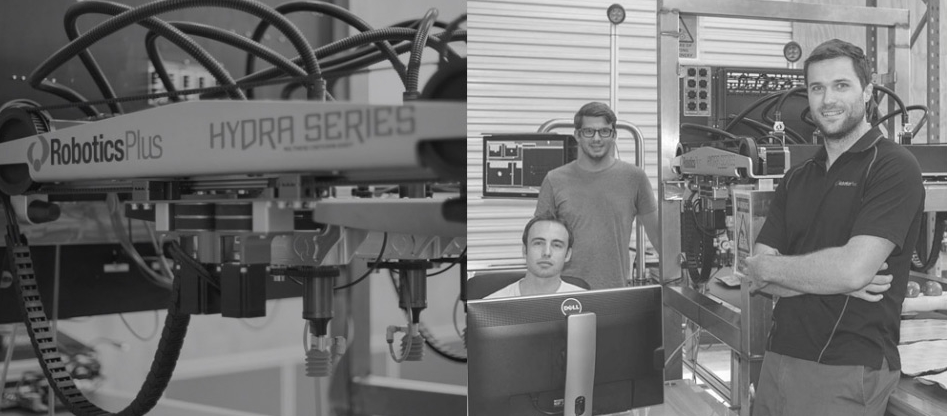MobileTECH – a major industry event focused on providing insight shaping the technology future of NZ’s primary sectors – took place in March this year. This second story of the MobileTECH 2016 two-part series showcases some of the emerging companies in the AgTech space featured at the conference. It also provides a critical commentary about the topics covered and the possible implications for NZ agriculture and our primary industries.
The explosion of rapidly evolving technologies is quite literally flipping the world’s primary land based industries, as we currently know them, on their heads. Including New Zealand’s. And with unprecedented levels of annual investment (now close to 5 billion US dollars (according to AgFunder) being pumped into the AgTech related ventures globally, it is critical that New Zealand be not left by the wayside. In fact, with our rich heritage in agricultural competitiveness and innovation, we need to lead show our ability to lead the pack.
With a major focus on showcasing new technologies designed to increase the productivity of NZ’s primary food and fibre industries, MobileTECH 2016 featured some 36 speakers and covered topics from rural connectivity, cloud-based platforms, automated tracking, mobile hardware to remote sensors, robotics, field capture tools, data management and satellite mapping.
Naturally with this line up the conference promised to highlight some of NZ’s up and coming tech companies and start ups operating in the AgTech space. Exciting stuff for the primary industry to learn from. Especially if we are to truly pull these traditionally technologically lagging industries out of the stone age and add more competitive value and bottom line to our export potfolio.
MobileTECH’s “TECH Talks” series – four minute elevator pitches from some of NZ’s up and coming startups and Ag incubators targeting NZ’s primary industries – including Agrimap, Rezare Systems, TrackIt, Poutama and Aeronavics –started to scratch the surface of some of the early stage Kiwi start ups now venturing into the world of AgTech.
For example, Agrimap’s Agri360 real time management software solution using detailed satellite farm maps, has enabled Kiwi farmers to do away with hideous paper trails and digitally record all sorts of farming information in the cloud. Fertiliser application, stock mobs, irrigation, soil testing, animal health, seeding or cropping are just some of the areas Agri360 has helped farmers to better record and store important information. According to Agrimap, adopters (farmers) of the platform are already enjoying significant cost savings, increased productivity and more free time for themselves.
Similarly Figured, a Kiwi start up that provides online collaborative software solutions enabling farmers to better financially manage their production planning, farming operations and budgeting using real-time financial information, also provided some great insights into Kiwi tech players helping to leverage the competitiveness of operators in New Zealand’s primary industries.
Poutama, an independent, forward thinking Maori charitable trust focused on driving more value added products into NZ’s traditional commodity based milk, sheep and goat milk markets was another great example of tech meets traditional Ag. Eying up the lucrative and ever increasing export sales growth in organics, infant formula and extended shelf life milk, Poutama’s Chief Ideas Officer, Richard Jones says the trust has invested heavily in a geothermal Kawerau milk processing plant focused only on premium quality exportable milk products. Now, half way though its first round of feasibility studies, Jones says Poutama’s main aim is not just to be a commodity product milk processor but a value food developer exporting its innovative high value products to the world. At long last someone in the industry focused beyond the realms of commodity, low value milk solids. Hallelujah.
However, as my earlier MobileTECH story mentioned, something that was visibly missing from MobileTECH 2016 was a greater focus on profiling more established leading edge Kiwi tech companies carving already hugely competitive niches in the primary sectors.

Robotics Plus focus on developing Mechanisation, Automation, Robotics and Sensor (MARS) technologies for horticulture and other primary industries.
RoboticsPlus, Bluelab, Zespri and MooCall are just some of the amazing more established Kiwi companies going gangbusters locally and internationally in the AgTech and horticulture space. It would have been beneficial for the conference to profile more of these local examples as a form of inspiration and knowledge. And so at times the high level tone of MobileTECH felt more aspirational and prescriptive rather than focused on practical case studies highlighting the hard business benefits tech and the adoption thereof provide the industry.
Another area where the conference would have benefited in indulging in greater detail was around industrialised indoor food production, and the fundamental disruption and risk this poses to New Zealand’s existing farming sectors. Surprising for a conference specifically focused on AgTech. Graham Smith, CEO of Federated Farmers briefly touched on synthetic biology such as the tumbling costs of in-vitro meat, “brewed” synthetic milk and vertical farming by way of content. But the significance of how these exponentially growing trends will impact the New Zealand agricultural system was given little airtime. Japan, for example, is already producing more than 10,000 heads of lettuce per day via novel and sustainable indoor methods. Statistics like this prove that food production is increasingly becoming an automated information technology business, not a farming business.
We might like to think there will always be a place for New Zealand’s high quality meat, milk solids and produce in the global marketplace. But when locally grown (no air miles), synthetic or indoor alternatives (with equal nutritional content) become cheap enough to feed the masses, will our key export markets still demand our expensively grown “real” versions”? It would be an assumption for us to think that they will. More discussion around how New Zealand’s primary sectors are adequately acknowledging and planning around technologically induced risks would have been useful.
The content discussed at MobileTECH also (usefully) unveiled just how fragmented New Zealand’s primary industries are from a tech vendor perspective. As the conference exposed, currently there are hundreds of niche solution providers servicing the market – many of whom are hopeful Kiwi startups. Conference attendee Ben Reid, Christchurch based strategic IT industry advisor, says the New Zealand farming industry would need to significantly restructure procurement up to corporate scale to lure larger tech vendors to invest significantly. But individual Kiwi farmers typically demand low cost or bespoke custom solutions before adopting new technology. The two approaches are largely at odds with each other. However the ag industry – at least at the farmer level – has yet to grasp the value (and significance) that a strategic and collective approach to technology adoption will have for the sector as a whole. This was reiterated by Figured’s Sophie Stanley who questioned whether New Zealand’s Ag sector was thinking enough like a technology company, or if it was still stuck in the mindset of traditional Ag companies.
Both Reid and CEMA’s Dr Adam (a fellow conference speaker) see a “Google Analytics” for Farm Data model as being a likely outcome where one or two global scale technology businesses provide on-farm sensing, analytics and intelligence in a “freemium” model in return for a licence to monetise the aggregate data. (Think selling predictions for next year’s milk price based upon this year’s sunshine, irrigation and grass measurements). But what happens to all the innovators out there already investing their hard earn Kiwi dimes in the AgTech industry? Not enough questions were being asked.
Final Thoughts
All in all, MobileTECH 2016 was an event worthy of attending. As evidenced by the level of discussions, companies and content featured at MobileTECH, one cannot deny the huge progress New Zealand is already making in the world of AgTech. MobileTECH also provided some very useful insights (even if this was demonstrated by limited content) for establishing just where on the global spectrum the competitiveness of New Zealand’s Primary industries actually lies.
For example, are the tech solutions that New Zealand players currently developing and deploying resilient enough to withstand industry consolidation or global scaleablity? And, how much value should we as a nation really be placing on investing in conventional tech solutions for the traditional farming and food production sectors, when there is a very real possibility that much of the world’s agriculture will be produced (in the very near future) indoors using DNA and/or UV technologies at a fraction of the cost and environmental impact?
To future proof New Zealand’s economy and entrench long term resilience into our primary industries, we will need an infrastructure and system of willing and supportive participants across the entire agricultural production value chain.
From tech developer to farmer and feller. This means a community of users (read farmers) ready to adopt high-tech, premium and sustainably minded solutions. But also a robust Ag system adaptive enough to embrace and invest in portfolios of technological solutions that include both land and lab based options. A complementary mix of the two will be pivotal to our competitiveness and survival going forward.
For those in the primary sectors still hanging onto the traditional number 8-wire mentality, this may look like challenging transition to make. But it’s not impossible. And with the right leadership and entrepreneurial thinking there is no doubt we can get there. The fate of our primary industries and national economy depend on it.



Leave a comment